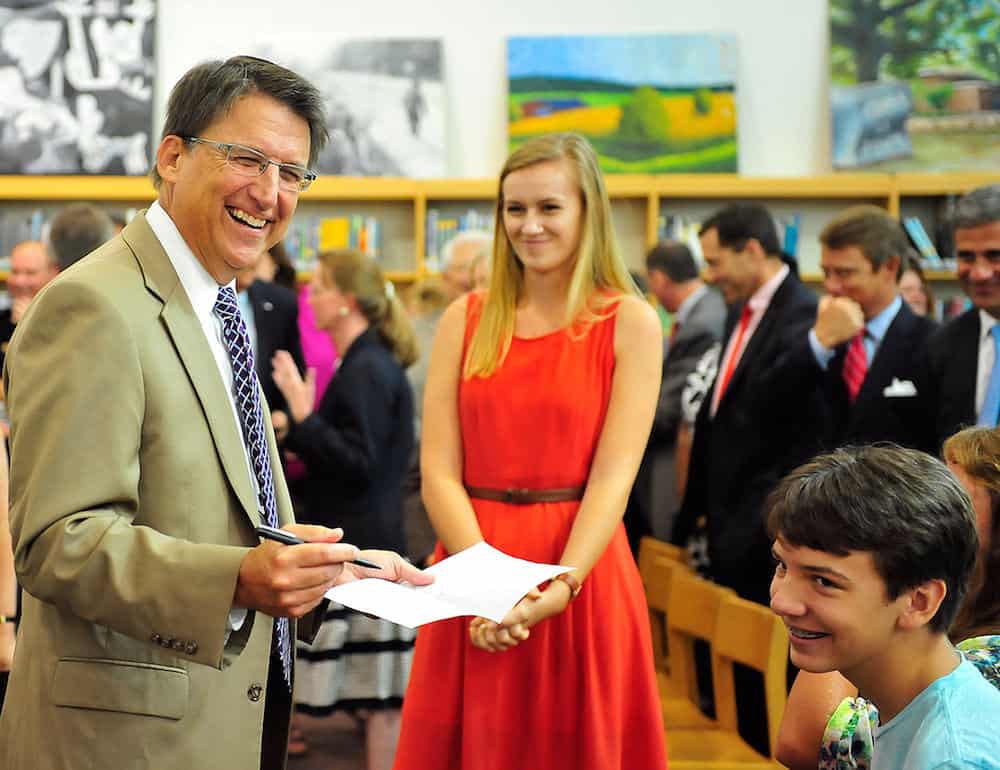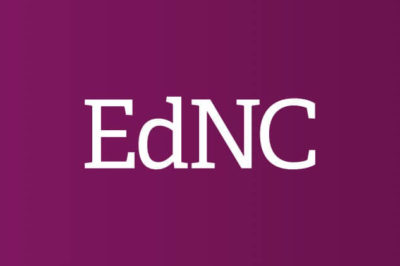Governor McCrory’s proposed 2015-16 budget would be the first since 2008-09 to make public education a true priority in North Carolina. When I first came to work for the school system in 1981, K-12 public schools’ funding made up 48 percent of the total General Fund budget. In 2014-15, K-12 public schools’ funding makes up 39 percent of the total General Fund budget. While North Carolina’s funding for public schools has increased significantly over the years, funding for other sectors in the budget, primarily health and human services, has increased much more percentagewise. At some point over the past 35 years, we seem to have lost our focus on education’s key role in holding down spending on health and human services.
Governor McCrory’s proposed 2015-16 budget would be the first since 2008-09 to make public education a true priority in North Carolina.
Governor McCrory’s proposed budget shows the General Assembly that you can have a budget that prioritizes K-12 public schools, if you so desire. Following through on last year’s promise, he proposes to raise the minimum teacher salary to $35,000 annually. This is extremely important given the alarming trend of fewer college students enrolling in teacher education programs. He also proposes to provide some funding to reward high performing teachers and to allow approximately one-fifth of experienced teachers to advance a level on the teacher salary schedule. It is extremely important to offer encouragement to experienced and high performing teachers to remain in the profession since there are fewer trained college graduates to take their places.
The Governor’s proposed $5 million in 2015-16 and $10 million in 2016-17 for performance-based pay is a start, but is only a drop in the bucket compared to the funding that will be needed to adequately reward our best teachers and prevent the huge teacher turnover talent drain that has plagued public schools for many years. However, under his proposed budget, the fact that tens of thousands of experienced teachers would receive no pay increases in the upcoming biennium does not bode well for reducing the overall teacher turnover rate in North Carolina.
In addition to pay that keeps pace with inflation, North Carolina’s teachers need better tools, including high quality training and hands-on classroom supplies, materials, and technology. Governor McCrory recommends in his budget consolidating the instructional supplies and textbook allotments for school districts, increasing the total funding by $35 million, and providing more flexibility on how these funds may be used. These are all very good ideas that would prove very beneficial to teachers and students. Additionally, he proposes $7.4 million to help schools get adequate Internet connectivity to allow teachers and students better access to online instructional resources. Conspicuously absent from his budget proposal, however, is any funding for teacher training. For the past six years, the North Carolina General Assembly has required school districts to rely entirely on federal funds to provide teacher training. Those federal funds are drying up, and yet teachers need more training than ever to meet the needs of increasing student populations.
One of the most important funding additions in the Governor’s budget proposal provides funds for growth in student populations.
One of the most important funding additions in the Governor’s budget proposal provides funds for growth in student populations. The 2014 General Assembly removed this funding from the continuation budget, requiring that such funding be considered an add-on to the starting budget. Without this funding, counties in the state with increasing student populations would receive no funding for new teachers to fill the additional classrooms required for those students. This is not just an urban district impact, as formulas allotting funds to all school districts in North Carolina are dependent to some extent on receiving funds for the total student population in the state.
One funding reduction in the Governor’s budget proposal earns my praise. He proposes to slightly reduce the rate that funds the state pension plans. In 2014-15, for every dollar paid to state employees in salaries, an additional 15.21 cents gets paid into the state’s retirement systems. In the near future, without reducing the retirement benefits promised to all current state employees, the General Assembly has to address the inordinately high cost of providing pension benefits to state employees. The General Assembly needs to recognize that new hire and existing state employees need more competitive pay to provide for current living expenses, even if it means reducing funding for pension plans for the new hires. In the past six years, non-teaching school system employees’ pay has risen 1.2 percent plus $500, far less than general cost of living increases.
The Governor has laid down the gauntlet, proving that you can use finite resources to make K-12 public schools a high priority. General Assembly, please pay attention!




